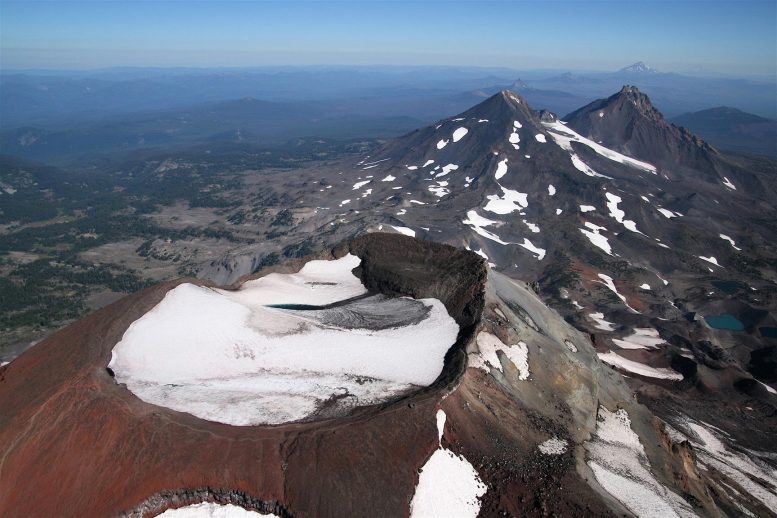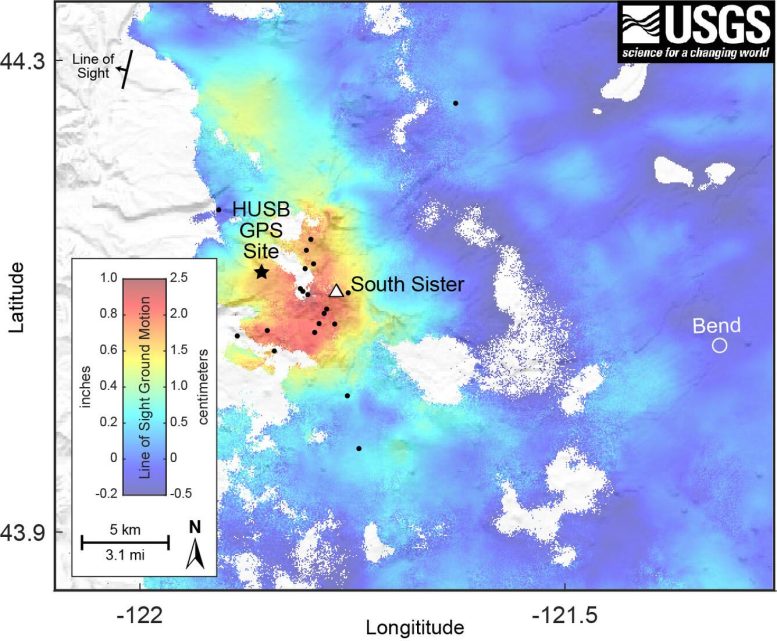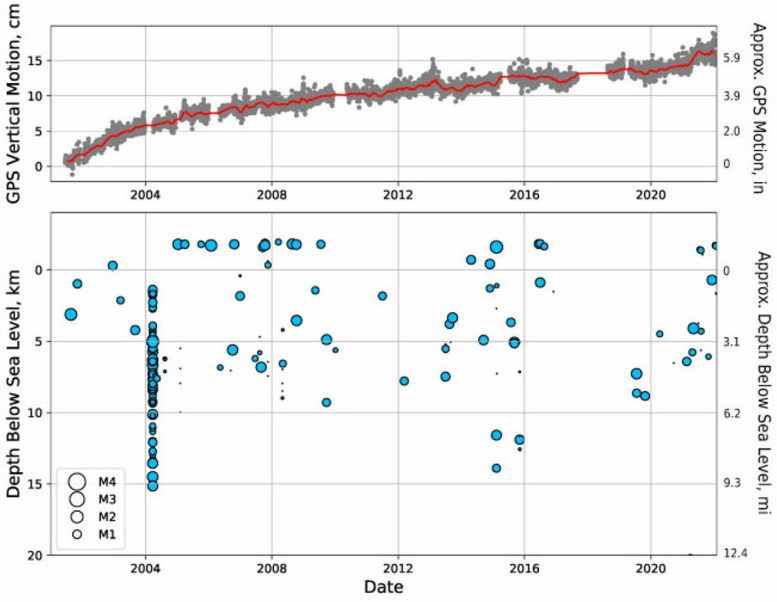This paleontologist says animals — including humans — are just 'guests in a microbial world'
Andy Knoll wins prestigious Crafoord Prize for his work studying life during Earth's first 3 billion years
After decades of studying rocks and discovering the secrets of life on Earth during the planet's first three billion years, paleontologist Andy Knoll has been awarded the prestigious Crafoord Prize in geosciences.
The annual $ 8-million science award is considered a complement to the Nobel Prizes.
"You can't say that something like the Crafoord prize is a dream fulfilled because nobody would ever dare to dream about that kind of thing," Knoll told As It Happens host Carol Off. "But it's just a wonderful feeling and it's nice to share it with friends and colleagues."
Throughout his career, the Harvard professor went out in search of answers for how life on Earth evolved before the existence of animals. What he came up with was a geological, biological and chemical analysis of bedrock and the fossils of tiny, microscopic organisms hidden within.
"Knoll is an incredibly versatile researcher who has taught and inspired many younger researchers in his field," Stefan Bengtson, member of the Royal Swedish Academy of Sciences' class for geosciences, said in a press release announcing the winner.
Knoll spoke with Off about his groundbreaking discoveries on biochemical evolution. Here is part of their conversation.
You've described rocks as being like a library that you can read to learn more about the history of the planet. Just tell us a bit about what you mean by that.
I'm always fond of telling my students that we live on a planet that records its own history, and that history is recorded in the physical, chemical and sometimes biological features of sedimentary rocks that are laid down, bed upon bed, through time. And it really is like a library.
If you want to understand what the Earth was like millions of years ago, the clues to that are sitting in rocks that were deposited billions of years ago. Once you learn to read the language … you see the library everywhere you go.
I just hit this rock with a hammer and it split in two — and there was this fossil. Something that you know, lived millions of years ago and no one had ever seen before. And that was just exciting. To this day, discovery excites me.- Andy Knoll, paleontologist and winner of the Crafoord Prize in Geosciences for 2022
Some of the more exciting things in that library, of course, are when people discover fossils of dinosaurs and great and fascinating creatures. But you studied what you call "the boring billion."
I think dinosaurs are great, too … but they existed for only a short time in the whole history of the Earth. And, in fact, animals have only existed for the last 15 per cent of our planet's history. Fundamentally, Earth was a microbial planet, and it still is.
A big part of that is what's called "the boring billion," which is essentially the time just before the advent of animals … when Earth seemed fairly quiet. Some of the chemical signals that we see going into overdrive on the eve of animal evolution were more or less invariant. We do find fossils there, and we now know that all of the features of cell biology and molecular biology that made animals possible were really hammered out during this interval.
Earth was an unusual place during that time. Different from today [and] different from the very early Earth in ways that we're still learning about. So in a sense, it's unfair to call it "the boring billion" because it actually offers us some of the most interesting challenges we have in terms of understanding how Earth has changed through time.
It's amusing when you say that it was relatively quiet. I guess microbial life isn't as noisy as some of those shrieking dinosaurs.
There are more bacteria in your body than there are human cells. And that's true, pretty much, of all animals. So I'm not kidding when I say that animals are guests in a microbial world.
When did you first become fascinated with what is inside of rocks?
I was about 10 when I think my father was conscripted to drive my brother's junior high school class to a science outing where they collected fossils. And to be honest, I think my brother could have cared less about it. But I just hit this rock with a hammer and it split in two — and there was this fossil. Something that, you know, lived millions of years ago and no one had ever seen before. And that was just exciting. To this day, discovery excites me.
Including discoveries that reveal so much about what we're going into. I mean, to go back so far to learn things that we now know instruct what may be coming in the future. And one of those things that you were able to explore and to explain for the first time is something called "the great dying." Can you tell us about that?
In the last 500 million years, in the age of animals, there have been five times when biological diversity plummeted sharply over a very short interval of time —so-called mass extinctions. And the largest of those took place about 252 million years ago, and we now appreciate that that coincides with almost unthinkably large volcanism [the eruption of molten rock onto the Earth's surface.]
This is volcanism a million times larger than anything ever seen by humans or our immediate ancestors…. It dawned on me that events at the end of that time interval would have put a lot of CO2 into the atmosphere. And this was actually before you would read about global warming every day in the paper.
But I just spent literally three months in the library reading the results of every physiological experiment on CO2 and animals that I could find. And interestingly enough, what I came up with was a means of explaining which groups suffered during that "great dying," which were relatively tolerant. And that turns out to be pretty similar to the groups that we think are most at risk and most likely to emerge relatively unscathed from 21st-century global change.
But when you talk about what happened with all of that volcanic activity that released all that CO2 and created this great dying, the CO2 emissions that are now being released … is done by us, right? So how does it compare?
The important thing is perhaps not so much the magnitude of the CO2 emissions, but the rate at which CO2 is being added.
I think it's fair to say that technological humans are emitting CO2 into the environment at rates that in Earth's history have only been matched by Earth's greatest volcanic cataclysms. So we are changing the Earth in a way and at a rate that is geologically unusual. And at times in the past, when Earth's environment has changed at comparable rates, it has been bad news for biology.
But you've also shown that when there have been these events like the great dying or these cataclysmic moments for the Earth, that life bounces back. Should that give us any encouragement?
There's good news and bad news there.
The good news is that, yes, in the wake of mass extinctions, ecosystems are re-established. Life diversifies again.
The bad news is that this happens on a scale of millions of years. So what we do in the 21st century is essentially permanent on any timescale that we might think about as humans.
Written by Mehek Mazhar. Interview produced by Kate McGillivray. Q&A edited for length and clarity.



/https:/www.thestar.com/content/dam/thestar/news/canada/2022/01/31/famed-blind-lawyer-joy-luk-has-fled-hong-kong-and-wants-refugee-status-in-canada/_main.jpg)

















